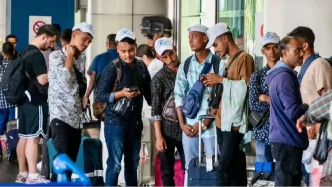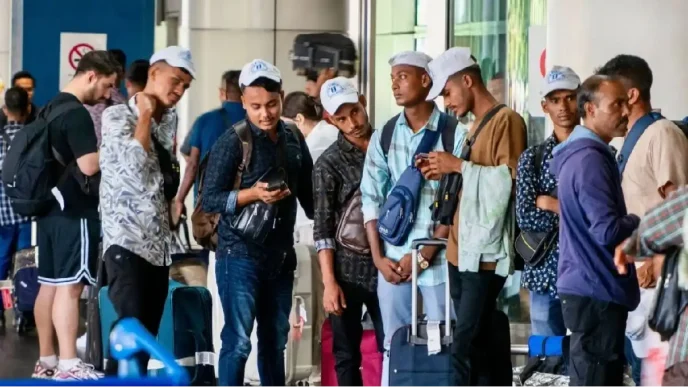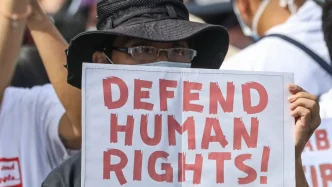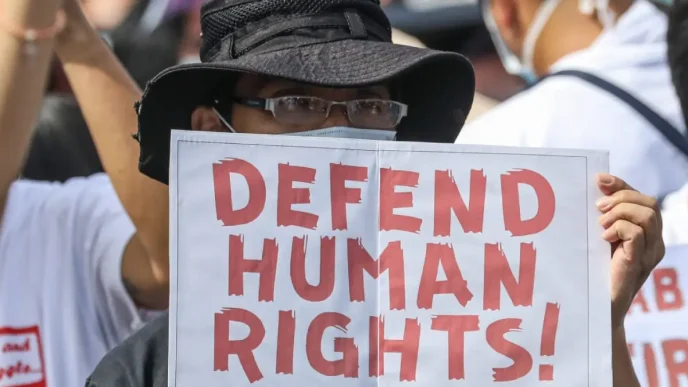In a significant development following the catastrophic collapse of a 30-storey State Audit Office (SAO) building in Bangkok on March 28, 2025, Thailand’s Department of Special Investigation (DSI) has summoned several companies linked to the construction project for questioning. The disaster, triggered by an earthquake, resulted in numerous fatalities, injuries, and missing persons, prompting a wide-ranging probe into potential negligence or misconduct in the building’s construction and oversight.
Investigation Underway as Evidence is Gathered
The DSI, in collaboration with the Department of Public Works and Town & Country Planning and Bang Sue Police Station, has been actively collecting evidence at the site of the collapse. Pol Captain Surawut Rangsai, deputy director-general of the DSI, announced on April 14 that the department is focusing on a meticulous investigative process, with significant progress already achieved. The scale of the tragedy has intensified public demand for accountability, as families of the victims seek answers about what led to such a devastating structural failure.
Surawut confirmed that companies involved in the construction and bidding process for the SAO building have been called in for questioning between April 18 and May 15. Among the firms summoned are China Railway Number 10 and Italian-Thai Development, both major contractors associated with the project. While specific details of the allegations remain undisclosed, the DSI’s actions suggest a focus on potential lapses in construction standards or financial irregularities tied to the project.
Financial Irregularities Under Scrutiny
Adding a layer of complexity to the investigation, Surawut revealed that an initial financial probe uncovered transactions involving funds transferred to two Chinese nationals. Although the DSI possesses relevant information, further details have been withheld pending the completion of the inquiry. This development raises questions about the transparency of financial dealings related to the SAO building project and whether foreign entities or individuals may have played a role in any oversight failures.
While no concrete evidence of wrongdoing has been publicly confirmed, the summoning of international contractors and the mention of financial transfers highlight the multifaceted nature of the investigation. If substantiated, these findings could point to systemic issues in how large-scale infrastructure projects are managed and monitored in Thailand, potentially implicating both private firms and public oversight bodies.
A Tragedy Amidst Natural Disaster
The collapse of the SAO building on March 28 was a stark reminder of the vulnerabilities in urban infrastructure, particularly in regions prone to seismic activity. The earthquake that triggered the disaster exposed critical weaknesses in the building’s design or construction, leading to a catastrophic loss of life. Emergency response teams worked tirelessly in the aftermath to rescue survivors and recover bodies from the rubble, while authorities scrambled to assess the safety of other high-rise structures in Bangkok.
The incident has reignited debates over building codes and enforcement in Thailand, where rapid urbanization has often outpaced regulatory updates. Experts have long warned that many structures in the capital may not be adequately equipped to withstand significant seismic events, despite Thailand’s location in a relatively low-to-moderate earthquake risk zone compared to neighboring countries like Indonesia or the Philippines. The SAO collapse, however, has brought these concerns to the forefront of public discourse.
Public and Political Reactions
The tragedy has sparked widespread outrage among Bangkok residents, many of whom are calling for stricter regulations and accountability for those responsible. Social media platforms have been flooded with posts expressing grief for the victims and frustration over perceived failures in government oversight. Civic groups have organized vigils and protests, demanding a transparent investigation and justice for the families affected by the collapse.
Politically, the incident has placed pressure on Thai authorities to address longstanding issues in infrastructure development. Opposition lawmakers have criticized the government’s handling of public projects, alleging that corruption and lax enforcement of safety standards may have contributed to the disaster. While no definitive evidence of such claims has emerged, the DSI’s investigation could serve as a litmus test for the government’s commitment to reforming how major construction projects are awarded and monitored.
Broader Implications for Thailand’s Infrastructure
The SAO building collapse is not an isolated incident but part of a broader pattern of infrastructure challenges in Thailand. Over the past decade, the country has seen several high-profile accidents linked to construction failures, ranging from bridge collapses to flooding in poorly planned urban areas. Each incident has underscored the need for comprehensive reforms in planning, design, and oversight—reforms that have often been delayed by bureaucratic inertia or competing political priorities.
In the case of the SAO building, questions remain about whether proper seismic assessments were conducted during its design and construction phases. Thailand’s building codes, while updated in recent years to account for earthquake risks, are not always uniformly enforced, particularly for older projects or those overseen by multiple stakeholders. The involvement of foreign contractors like China Railway Number 10 also raises concerns about the consistency of standards applied to international firms operating in the country.
Moreover, the financial transactions flagged by the DSI could point to deeper issues of accountability in how public funds are allocated and spent. Infrastructure projects, often valued at millions of Thai Baht, are lucrative contracts that can attract both legitimate businesses and those willing to cut corners. For instance, a budget allocation of 100 million Thai Baht (US$2.8 million) for a project like the SAO building would typically involve rigorous checks—yet the collapse suggests that such checks may have been inadequate or bypassed entirely.
Regional Context and Comparisons
Thailand’s struggle with infrastructure safety is not unique in Southeast Asia, where rapid economic growth has often come at the expense of robust regulatory frameworks. In Indonesia, for example, frequent earthquakes have exposed similar vulnerabilities in urban centers like Jakarta, prompting the government to invest heavily in retrofitting buildings and updating codes. Malaysia, too, has faced challenges with construction quality, though its stricter enforcement mechanisms have mitigated some risks.
For Thailand, the SAO collapse could serve as a catalyst for adopting best practices from its neighbors. Regional cooperation on disaster preparedness and infrastructure resilience—through forums like the Association of Southeast Asian Nations (ASEAN)—may also provide a platform for sharing expertise and resources. However, implementing such changes will require political will and sustained public pressure, both of which have historically been inconsistent in Thailand’s governance landscape.
Looking Ahead: Accountability and Reform
As the DSI continues its investigation into the SAO building collapse, the focus remains on uncovering the root causes of the disaster and ensuring that those responsible are held accountable. The summoning of companies for questioning marks a critical step in this process, but it is only the beginning. Families of the victims, along with the wider public, are watching closely to see whether the inquiry will lead to meaningful reforms or merely serve as a temporary response to public outrage.
Beyond the immediate investigation, the tragedy presents an opportunity for Thailand to reevaluate its approach to urban development and disaster preparedness. Will the government prioritize stricter building codes and enforcement, even if it means higher costs or slower project timelines? Can public trust be restored through transparent accountability mechanisms? These questions loom large as the nation grapples with the aftermath of a preventable tragedy.
For now, the streets of Bangkok bear the scars of the March 28 collapse, both physical and emotional. As rescue efforts transition to rebuilding and reflection, the hope is that lessons learned from this disaster will pave the way for a safer future—one where such a loss of life is never repeated.














